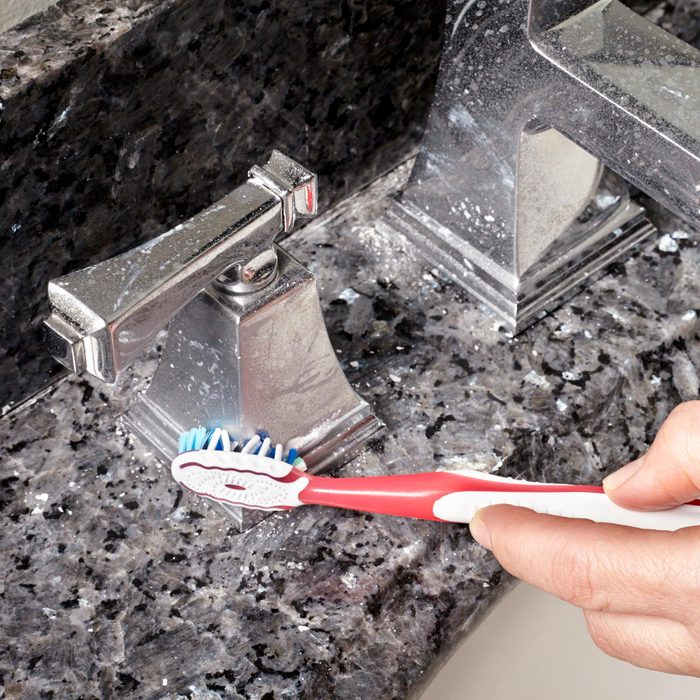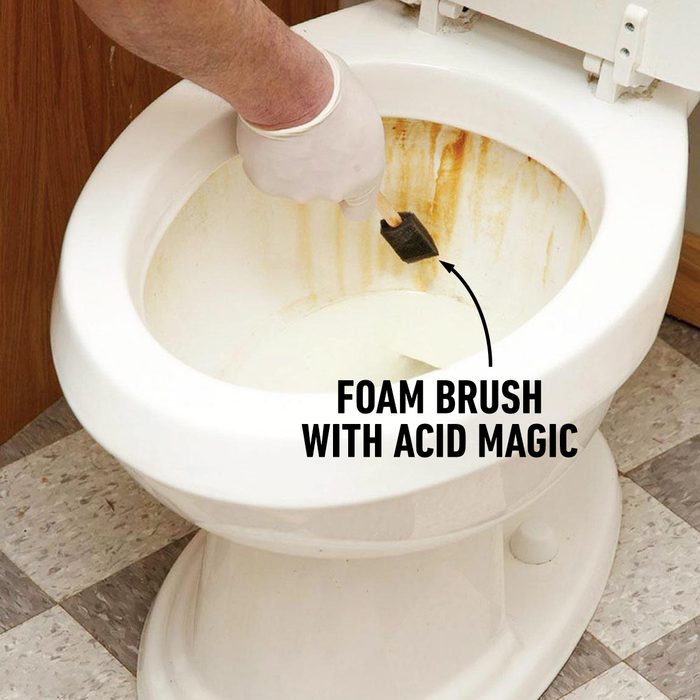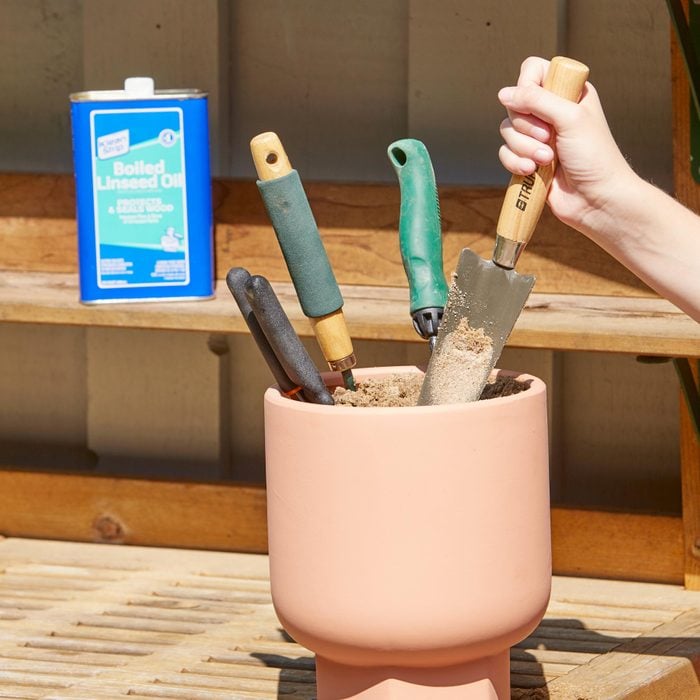Keep your tools, silverware and other metals rust free!
12 Tips and Tricks to Prevent and Remove Rust

Kitty Litter Pouch for Tool Protection
If you store your toolbox in a non-climate-controlled garage or shed, or in the bed of your truck, you’ll need rust protection. You could use those tiny silica packets that come with a new pair of shoes, but it could take months (or years!) to collect enough to protect your tools from excess moisture.
Instead, make a DIY rust-preventing pouch with a generous scoop of silica crystal kitty litter, a piece of breathable fabric (we cut off a piece of an old t-shirt) and a zip tie.
Toss the pouch inside your toolbox to keep your tools rust-free. You can make several pouches with one bag of kitty litter. Heck, make some extra pouches and give them to your friends for the holidays!

Remove the Rust From Metal Tools
Hammers, wrenches and other fully or partially metal hand tools are bound to form rust over time, especially if they’re used a lot. Here’s how to get them looking great again:
Submerge them in vinegar overnight to dissolve the coating of oxidized metal. Rinse them off with water, then rub them down with fine grade steel wool to remove any remaining rust. Then add light machine oil to protect them against further moisture damage.

Clean a Cast Iron Skillet with Coarse Salt
To prevent rust and extend the life of a cast iron skillet, it’s best not to use soap to clean it. Instead, scrub the pan with about a tablespoon of coarse salt. The salt breaks up bits of stuck food and residue. Then you can toss the dirty salt in the trash, rinse the pan with hot water and dry it with a clean towel.
To further protect a cast iron skillet, rub a few drops of vegetable oil over the entire cooking surface.

Polish Your Metal
No matter how careful you are with your stainless steel pots, those nice steak knives or that fancy coffee travel mug, sometimes they pick up small rust spots from residual water. Next time you notice a small rust spot on your metal kitchen tools, simply squeeze a little lemon juice into a sponge and rub it on the surface. Here’s what you need to know while prepping rusty metal for paint and painting over rusted metal.
Using spray paint from a can or a sprayer is a fast and efficient way to paint rusty things like a mailbox or weather vane. ( Find out how much time spray paint takes to dry).

Revive Old Scissors
Remove the bolt holding the scissor blades together and examine the inside face of both blades. If there’s evidence of rust, the bolt or washers probably aren’t made of stainless steel.
Sand the area with fine-grit sandpaper, removing all the rust. Dribble a little light machine oil into the area and replace the washers. Reassemble the scissors and open and close them several times to work in the oil. Chances are they’ll cut well again for a long time to come. Here are a few tips to remove rust from stainless steel.

Anti-Corrosion Nonslip Mesh Liner, VCI Capsule and VCI Zipper Bag
Maybe you’ve got some nice tools. But if you’re like many of us, you store them in the garage or shed, where heat and humidity can take their toll.
Prevent them from rusting by storing them with vapor corrosion inhibitor (VCI) products — capsules, mesh liners and zipper bags. These are infused with rust-inhibiting compounds that vaporize and attach to metal surfaces. The vapor molecules form an anticorrosive coating on tools to prevent rust.

Wash and Wax Your Faucets
Every three months, use CLR Calcium, Lime and Rust Remover and an old toothbrush to clean all the faucets and lavatories. Then apply an automotive car wax like Turtle Wax and buff after the wax hazes. Your fixtures will look like new.

Remove Stubborn Rust Stains with Acid Magic
If you have iron in your water and struggle with rust stains in your toilet or bathtub, here’s a perfect solution. Acid Magic dissolves rust. It’s as powerful as muriatic acid but much safer and more pleasant to use.
You should still take all the precautions you would with any strong cleaning solution, like wearing gloves and safety glasses. But it’s better than regular acid because there are no noxious fumes, and it won’t burn your skin.
To clean rust from toilets and other porcelain surfaces, add one part Acid Magic to three parts water. Apply the mixture to the rust stains with a sprayer, brush or foam pad and watch the stain dissolve. Rinse with clear water. You can also use it full strength for stubborn stains. Avoid getting the acid on metal parts because they can discolor.

Use Coca-Cola on Rusty Pans
Coca-Cola can also clean up rusty cast iron skillets in a jiffy. If your dishwasher is acting up, find a fix with some dishwasher repair tips, including what do with a broken dishwasher rack.

No-Rust Toilet Screws
It doesn’t take long for the hinge screws on a toilet seat to rust, sending rust dust all over the rim every time the seat slams. To prevent this, dab a little clear nail polish onto the screw heads.
If the toilet screws are already rusted, fill the holes with caulk. Don’t worry — you’ll never have to get at the toilet screws, because you’ll replace the whole seat and lid assembly some day. — Mike Scholey.

Rust-Free Tool Storage
Regular maintenance keeps your garden tools clean and rust-free. To cut down on maintenance time, fill a bucket with sand and mix in a plant-based oil like boiled linseed oil. Plunging a blade, tines or teeth into the sand a few times cleans off any dirt and gives them a light coating of oil for rust prevention. You can even store your tools right in the pot.

Remove Rust with Electrolysis
Here’s how to remove rust with electrolysis. You’ll need a plastic or glass container deep enough to hold enough water to cover your rusty item. And you’ll also need a battery charger, a box of washing soda (found with the laundry detergents at just about any big grocery store), a short copper wire and some rebar bent to fit around the object you’re restoring.
Hook everything up as shown and walk away. It gets rid of most of the rust. You’ll still need to polish with sandpaper, steel wool or Scotch pads to get down to bare metal.
